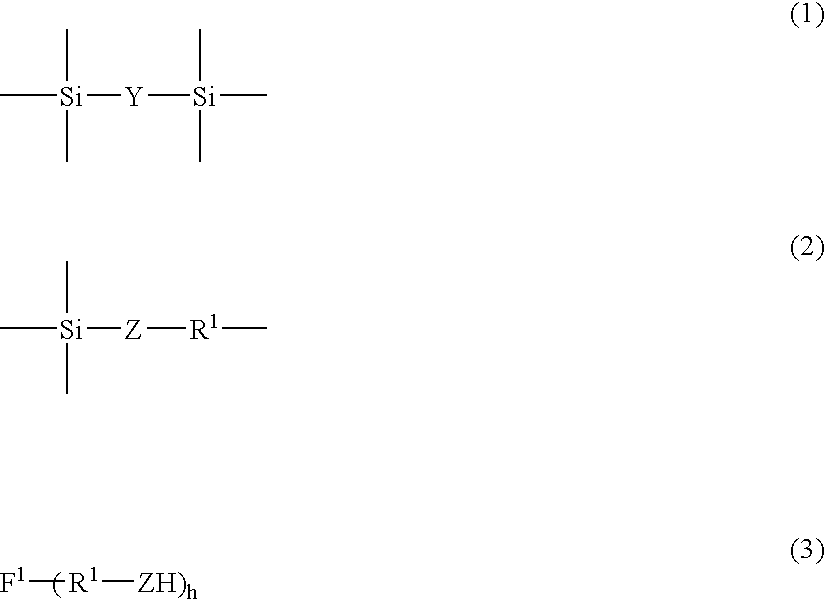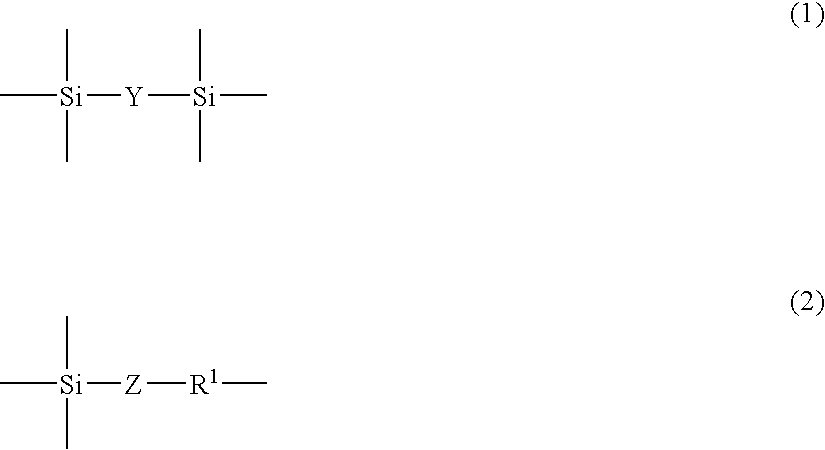Electrophotographic photoreceptor, method for producing the same, image forming apparatus and process cartridge
a photoreceptor and electrophotographic technology, applied in the direction of electrographic process equipment, instruments, corona discharge, etc., can solve the problems of deteriorating image quality, production cost, and above-mentioned conventional electrophotographic photoreceptors not necessarily sufficient in electrophotographic characteristics and durability, etc., to improve stain resistance against the developing agent, reduce the density of crosslinking, and reduce the effect of crosslinking density
- Summary
- Abstract
- Description
- Claims
- Application Information
AI Technical Summary
Benefits of technology
Problems solved by technology
Method used
Image
Examples
example 1
[0164] An electrophotographic photoreceptor having a constitution similar to that of the electrophotographic photoreceptor 1 shown in FIG. 3 is prepared through the following procedure. A solution comprising 100 parts of a zirconium compound (trade name: Orgatics ZC540, manufactured by Matsumoto Chemical Industry Co., Ltd.), 10 parts of a silane compound (trade name: A110, manufactured by Nippon Unicar Co., Ltd.), 400 parts of isopropanol and 200 parts of butanol is applied by dip coating onto a cylindrical Al substrate subjected to honing treatment, and dried by heating at 150.degree. C. for 10 minutes to form a 0.1-.mu.m undercoating layer.
[0165] Then, as a charge generation material, 10 parts of chlorogallium phthalocyanine crystals having strong diffraction peaks at Bragg angles (2.theta..+-.0.2.degree.) of 7.4.degree., 16.6.degree., 25.5.degree. and 28.3.degree. in an X-ray diffraction spectrum using CuK.alpha. radiation is mixed with 10 parts of a polyvinyl butyral resin (trad...
example 2
[0168] An undercoating layer, a charge generation layer and a charge transport layer are formed in the same manner as with Example 1. Then, the kinds and amounts compounded (parts) of components for forming a siloxane resin, polyvinyl butyral resin, fine particles, distilled water, catalyst, multidentate ligand and antioxidant are changed as shown in Table 2, and a 3-.mu.m protective layer is formed on the charge transport layer in the same manner as with Example 1 to obtain a desired electrophotographic photoreceptor. In Example 2, the dispersing step is omitted. In Table 2, Sumilizer BHT is a trade name of a hindered phenol antioxidant (manufactured by Sumitomo Chemical Co., Ltd.).
example 3
[0169] An undercoating layer, a charge generation layer and a charge transport layer are formed in the same manner as with Example 1. Then, the kinds and amounts compounded (parts) of components for forming a siloxane resin, polyvinyl butyral resin, fine particles, distilled water, catalyst, multidentate ligand and antioxidant are changed as shown in Table 2, and a 3-.mu.m protective layer is formed on the charge transport layer in the same manner as with Example 1 to obtain a desired electrophotographic photoreceptor.
PUM
| Property | Measurement | Unit |
|---|---|---|
| oscillation wavelength | aaaaa | aaaaa |
| Ra | aaaaa | aaaaa |
| Ra | aaaaa | aaaaa |
Abstract
Description
Claims
Application Information
 Login to View More
Login to View More - R&D
- Intellectual Property
- Life Sciences
- Materials
- Tech Scout
- Unparalleled Data Quality
- Higher Quality Content
- 60% Fewer Hallucinations
Browse by: Latest US Patents, China's latest patents, Technical Efficacy Thesaurus, Application Domain, Technology Topic, Popular Technical Reports.
© 2025 PatSnap. All rights reserved.Legal|Privacy policy|Modern Slavery Act Transparency Statement|Sitemap|About US| Contact US: help@patsnap.com



